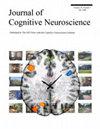Monkey Lateral Prefrontal Cortex Subregions Differentiate between Perceptual Exposure to Visual Stimuli
IF 3
3区 医学
Q2 NEUROSCIENCES
引用次数: 0
Abstract
Each day, humans must parse visual stimuli with varying amounts of perceptual experience, ranging from incredibly familiar to entirely new. Even when choosing a novel to buy at a bookstore, one sees covers they have repeatedly experienced intermixed with recently released titles. Visual exposure to stimuli has distinct neural correlates in the lateral prefrontal cortex (LPFC) of nonhuman primates. However, it is currently unknown if this function may be localized to specific subregions within LPFC. Specifically, we aimed to determine whether the posterior fundus of Area 46 (p46f), an area that responds to deviations from learned sequences, also responds to less frequently presented stimuli outside of the sequential context. We compare responses in p46f to the adjacent subregion, posterior ventral area 46 (p46v), which we propose may be more likely to show exposure-dependent responses due to its proximity to novelty-responsive regions. To test whether p46f or p46v represent perceptual exposure, we performed awake fMRI on three male monkeys as they observed visual stimuli that varied in their number of daily presentations. Here, we show that p46v, but not p46f, shows preferential activation to stimuli with low perceptual exposure, further localizing exposure-dependent effects in monkey LPFC. These results align with previous research that has found novelty responses in ventral LPFC and are consistent with the proposal that p46f performs a sequence-specific function. Furthermore, they expand on our knowledge of the specific role of LPFC subregions and localize perceptual exposure processing within this broader brain region.猴子外侧前额叶皮层亚区在视觉刺激下知觉暴露的区别。
每天,人类都必须用不同程度的感知经验来解析视觉刺激,从非常熟悉的到全新的。即使是在书店买书,也会看到反复体验过的封面和最近发行的书混杂在一起。视觉刺激暴露在非人类灵长类动物的外侧前额叶皮层(LPFC)中具有明显的神经相关性。然而,目前尚不清楚该功能是否可能定位于LPFC的特定子区域。具体来说,我们的目的是确定46区后眼底(p46f),一个对偏离学习序列做出反应的区域,是否也对序列上下文之外较少出现的刺激做出反应。我们将p46f区的反应与相邻的亚区,后腹区46 (p46v)进行了比较,我们认为由于p46f区靠近新奇反应区,p46v区可能更有可能表现出暴露依赖性反应。为了测试p46f或p46v是否代表感知暴露,我们对三只雄性猴子进行了清醒状态下的功能磁共振成像(fMRI),让它们观察每天出现次数不同的视觉刺激。在这里,我们发现p46v,而不是p46f,对低感知暴露的刺激表现出优先激活,进一步确定了猴子LPFC中暴露依赖的局部效应。这些结果与先前在腹侧LPFC中发现新奇反应的研究一致,并与p46f执行序列特异性功能的提议一致。此外,他们扩展了我们对LPFC子区域的特定作用的了解,并将感知暴露处理定位在这个更广泛的大脑区域内。
本文章由计算机程序翻译,如有差异,请以英文原文为准。
求助全文
约1分钟内获得全文
求助全文
来源期刊
CiteScore
5.30
自引率
3.10%
发文量
151
审稿时长
3-8 weeks
期刊介绍:
Journal of Cognitive Neuroscience investigates brain–behavior interaction and promotes lively interchange among the mind sciences.

 求助内容:
求助内容: 应助结果提醒方式:
应助结果提醒方式:


